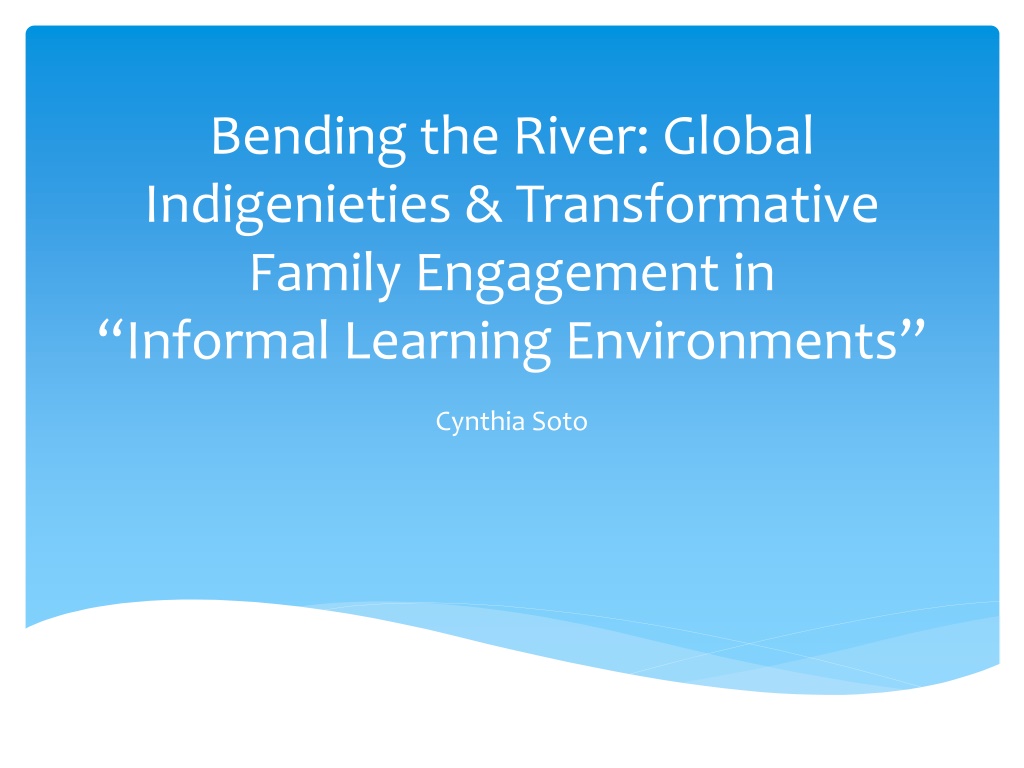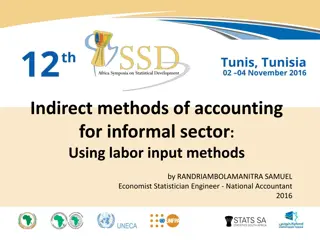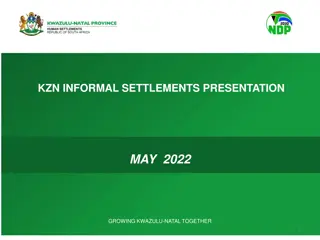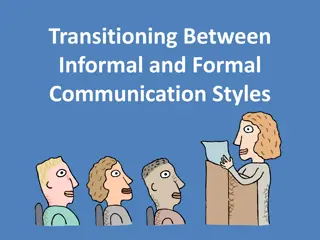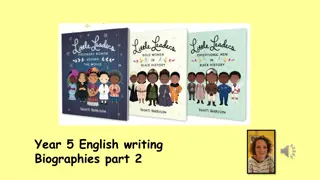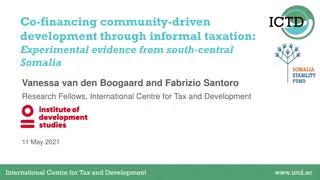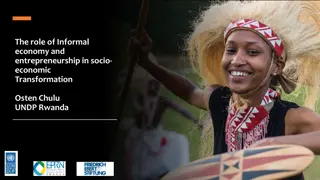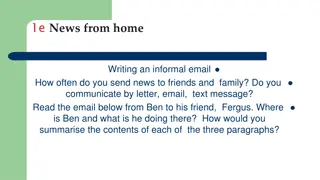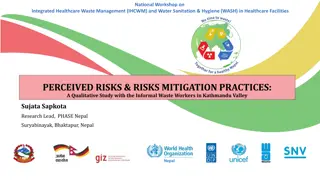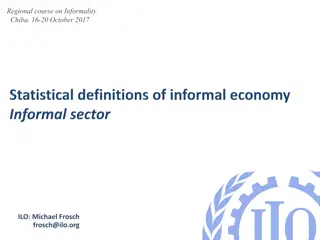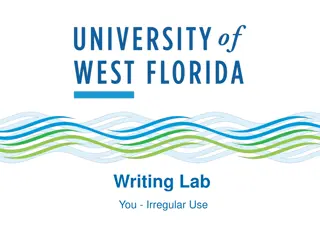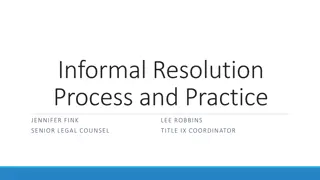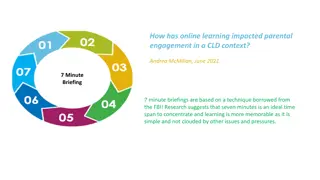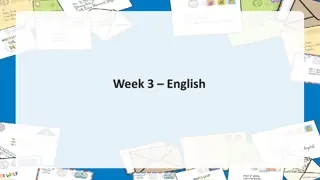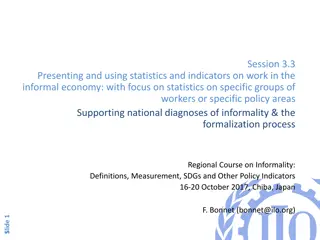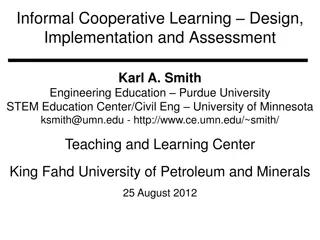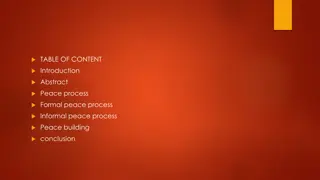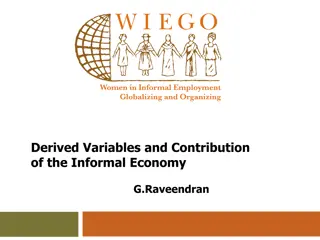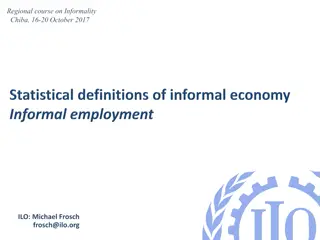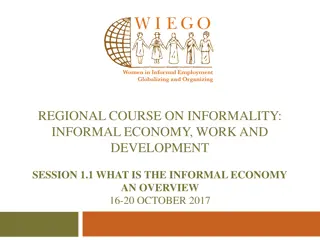Transformative Family Engagement in Informal Learning Environments
Global Indigenous groups explore community wellness, educational justice, and the role of elders through reflective sessions. They aim to redefine narratives, challenge power dynamics, and reclaim their stories in a post-colonial context.
- Family Engagement
- Indigenous Communities
- Educational Justice
- Community Wellness
- Transformative Learning
Uploaded on Sep 23, 2024 | 0 Views
Download Presentation

Please find below an Image/Link to download the presentation.
The content on the website is provided AS IS for your information and personal use only. It may not be sold, licensed, or shared on other websites without obtaining consent from the author. Download presentation by click this link. If you encounter any issues during the download, it is possible that the publisher has removed the file from their server.
E N D
Presentation Transcript
Bending the River: Global Indigenieties & Transformative Family Engagement in Informal Learning Environments Cynthia Soto
Who we are & Why Global Indigeneities New group of parents, educators, artists, community members gathered together Identify as Indigenous from different Indigenous communities/nations Pueblo, Ojibwe, Lakota, Hawaiian, Chamorro, Taino, Hochunk, etc. Active participants, volunteers, community members working within and/or on behalf of Indigenous peoples artists, lecturers, non-profits, bricklayer, environmentalist, parents, educator, student, dancer, singer, youth Why global Indigeneities?
What we did: Focal Questions/Framings Session 1: We asked people to think about our individual or community histories with Education and wellness from past 4 Community Design Circles 2-3 Hours long Meet at community org Session 2: What are we currently doing in our communities with educational justice and community wellness Session 3:How do we define who is an Elder? Session 4:How and why is it important to think about the importance of elders to community wellness and educational justice?
Reflection Questions 1) How did this group imagine community wellness and educational justice? 2) What forms of solidarities emerged and how? 3) How did issues of power get conceptualized, questioned, and transformed through the process?
Overview of findings Processes and forms of engagement for building relationships and trust, recognizing our shared histories and values in order to imagine future possibilities. Reframe normative achievement and development narratives to imagining pathways for our children and ourselves to become elders and good ancestors Traced the ways colonialism has defined the terms of engagement and shifted to wanting to tell our own stories on our own terms
River of Life Visual narrative of collective stories from past, present and for the future Makes visible critical historicity and then helps hold it in the space over time.
The Beauty & Power of Shared, Safe Spaces SP2:I think, just a comment to how all of that came about. I think at first, I remember we were all hesitant because we didn't know what to put up there and everyone was waiting for somebody to write something down. It was nice how it all started to flow and we all had a lot more to just keep adding to it. We weren't going to let that little log stop the river from flowing. SP 1:Depending on how important it is for us to make certain that our children remain connected, we must keep them involved. A lot of what I do here is motivated by the work that my family's doing there. But also, in part, it's [inaudible 00:10:56]. In other words, it's a choice, but it's not a choice. It's not a matter of can or no can, but I have to bring my kids home so that they can walk the path.
Be a Good Ancestor! Why not start with being a GOOD Elder? Speaker 3: To be an elder is someone who can teach me something. Someone who is that real sense of wise and not all old people are wise. I know some old people that act very immature. I think it's important for us to remember that when we do get old ... I do. I want to be a good elder. I want to be able to teach younger generations. I want to teach by example, by good example. I think that's important for us to remember as we get older. I think that goes along with then once we pass on we'll be remembered as, hopefully, a good ancestor. Speaker 1: That almost prompts the next series of, "How will I?" Question. Perhaps, "How do we wish to be viewed by the next generation?" If they're coming in behind us, it can help keep us in check in many different ways. What you are also observing change in that concept that not all elders carry that right. You are witnessing based on the teachings within the house, that there is some very old souls that have found their way into a younger age. It might not fit the criteria by age of men that carry it because they're steeped and raised ... I was raised by my grandmother, not my mother.
Who is an Elder? Modeling Mentoring Relearning Reclaiming the space Intentional spaces Community wellness Check in and bring back Real talk about what it means for community wellness,
Telling Our Own Stories on our own terms Parent leader: I think that one of the first looks at educational justice would be to look at what some of the break down causes, the root causes of the breakdown, or hindrance...number one is the attitude of the victor is the one who tells the story, and almost all the times, people who oppress another people are always going to tell an incorrect version. That's pretty much always going to happen. We could look at history and see that as a fact ....It is a human thing, it's a very human thing, so number one is the idea, an idea that who tells the story, and that's been beat into oppressors that that's part of their victory, that's part of their reward, is that they get to tell the story.
RESURGENCE- YOUTH PARTICIPATION Mom: ..so I was able to identify who that chaplain is, and it got to them. I wanted to make sure it got to the Native Hawaiians that were incarcerated over there. Within that year, I received about 30 testimonies that were recorded by all those guys. Bring tears, because what they were able to do is present a whole presentation to everyone in the prison of , which is a way of life all in the form of chanting men, chanting . style, for us, hula. All empowered by these instruments that they said that, in testimonies came back, some of those guys that were in there, they knew they'd be out in five years, so it was more along the lines of wow, it was such an experience, if I get out of here, I know exactly what I'm going to do. I know where I need to go, it has reopened some areas in their life they set aside because of everything that was going on, challenges that are on this Earth. son: Gave them hope. mom: I- Son: Gave them value.
Conclusion What did you learn about imagining change through working on Global Indigeneities towards educational justice in community design circles?
THANK YOU CHICAGO INDIGENOUS COMMUNITIES OUR CHILDREN
